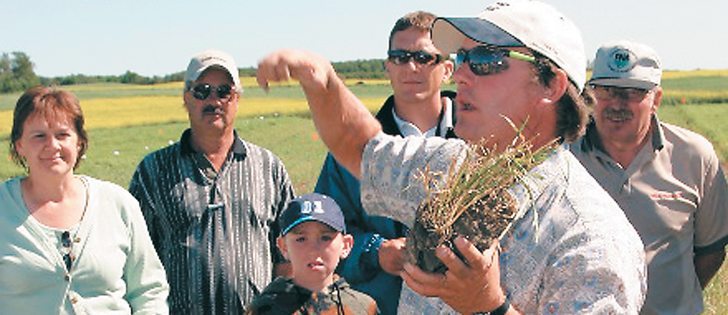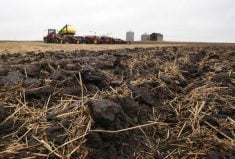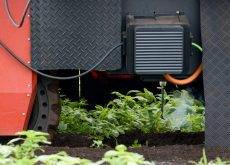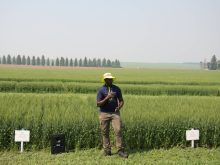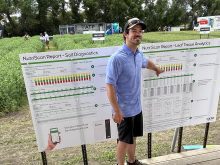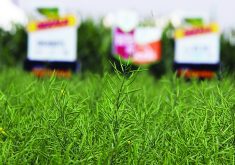Farmers can add phosphorus mobilization to the list of benefits they reap from growing forage legumes, according to research at the University of Saskatchewan.
Jeff Schoenau, who leads the research project, said the soil legume crops he tested removed more phosphorus from soil then the annual crops he included in the study.
In an effort to better understand how the forage legumes alfalfa and red clover affect soil nutrient levels, Schoenau examined the productivity of crops following these legumes and compared it to two other crop sequences.
Read Also

Final crop reports show strong yields, quality
Crops yielded above average across the Prairies this year, and quality is generally average to above-average.
Four crop rotations were followed: two years of alfalfa, two years of red clover, barley-pea and barley-flax. Each cropping sequence was then followed by a wheat crop and a canola crop.
“What we found in terms of the forage legumes in particular, they had significant nitrogen replacement value, as we would expect, but a lot of the benefits of having a legume in rotation even only for a couple years came from a non- nitrogen benefit,” Schoenau said after his presentation at the Saskatchewan Soil Conservation Association meeting in Saskatoon.
The non-nitrogen benefits of red clover and alfalfa included their ability to reach deep into the soil profile with the plants’ well-endowed rooting system and access phosphorous.
“Legumes can solubilize calcium phosphates that are common in our sub-soils and recycle them by bringing them up to the surface,” he said.
Alfalfa and red clover removed more phosphorus from the soil than the other crops in the rotation. Crops following these crop sequences yielded higher, which caused even more phosphorous to be removed.
“The forage legumes were helping to mobilize and maintain the available phosphorus in the soils in the short term,” Schoenau said.
Wheat on legume stubble, especially alfalfa and red clover, yielded higher, and the benefits of the legumes, especially the forage crops, persisted into the second year when canola was grown.
The forage crops were shown to mobilize and maintain phosphorus more efficiently than the barley-pea rotation.
“However, over the longer term, we recognize when you have these forage legumes in there, ultimately you have to look at replacing that phosphorus through the application of manure or fertilizer P.”
Schoenau said the research demonstrates the importance of diversity in a cropping system.
“By growing a lot of different types of crops, growers can often make better use of the nutrients that are contained in a soil because all those different crops have different rooting systems that each have a unique ability to remove and obtain access to a different component of the nutrient pool,” he said.
Schoenau, who is a SSCA board member, said his presentation fit well with the transitioning to sustainability theme of this year’s conference.
“We want to maintain that soil resource, and we also want to be able to make sure the crops that we are growing are well nourished and that we have productive soils that equate into highly productive and profitable cropping systems,” he said.
Contact robin.booker@producer.com


